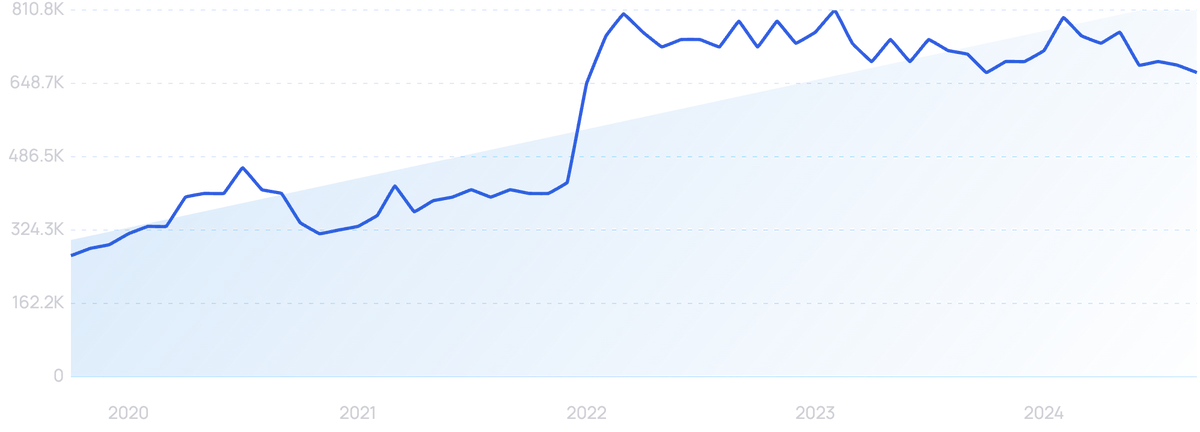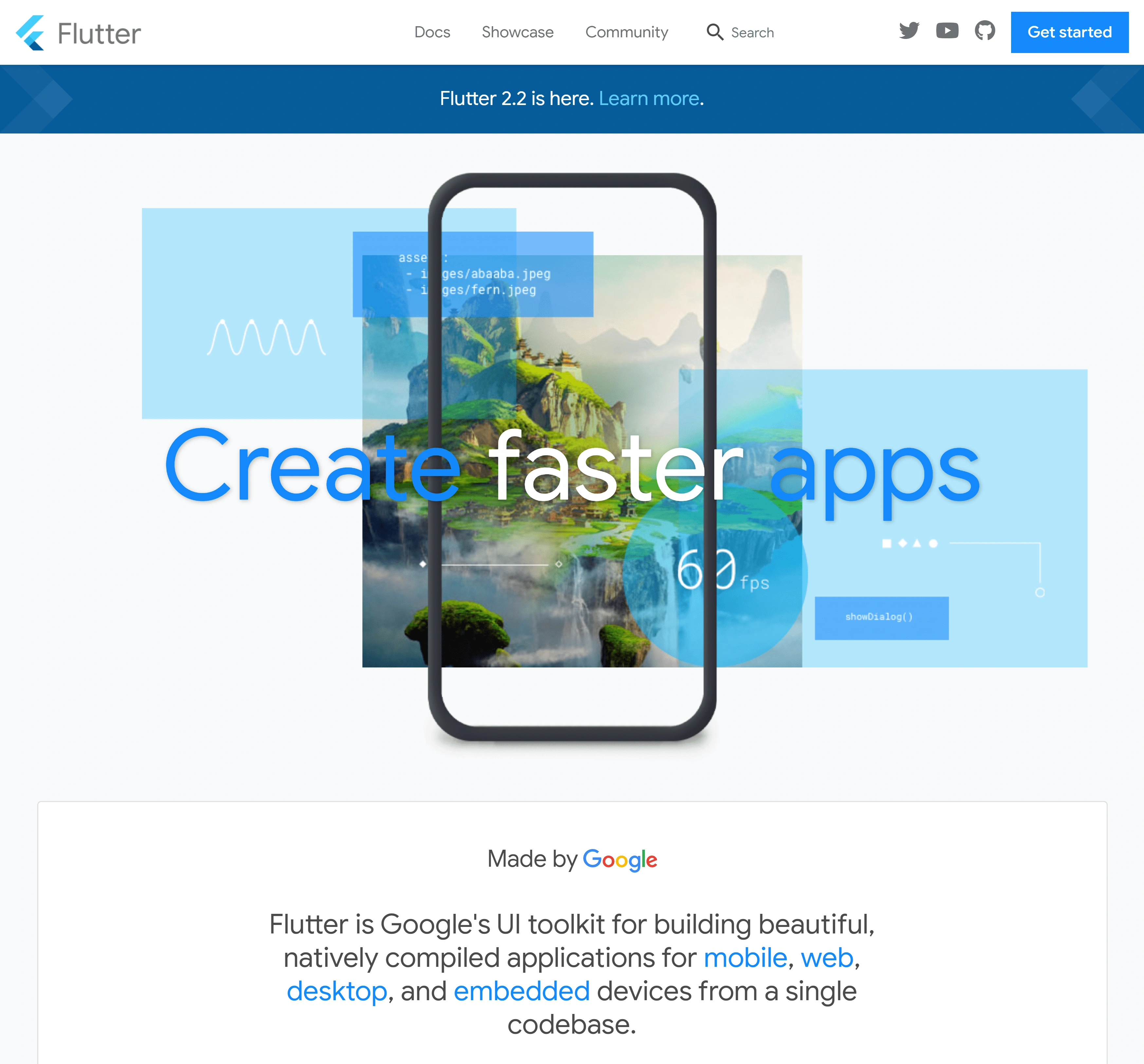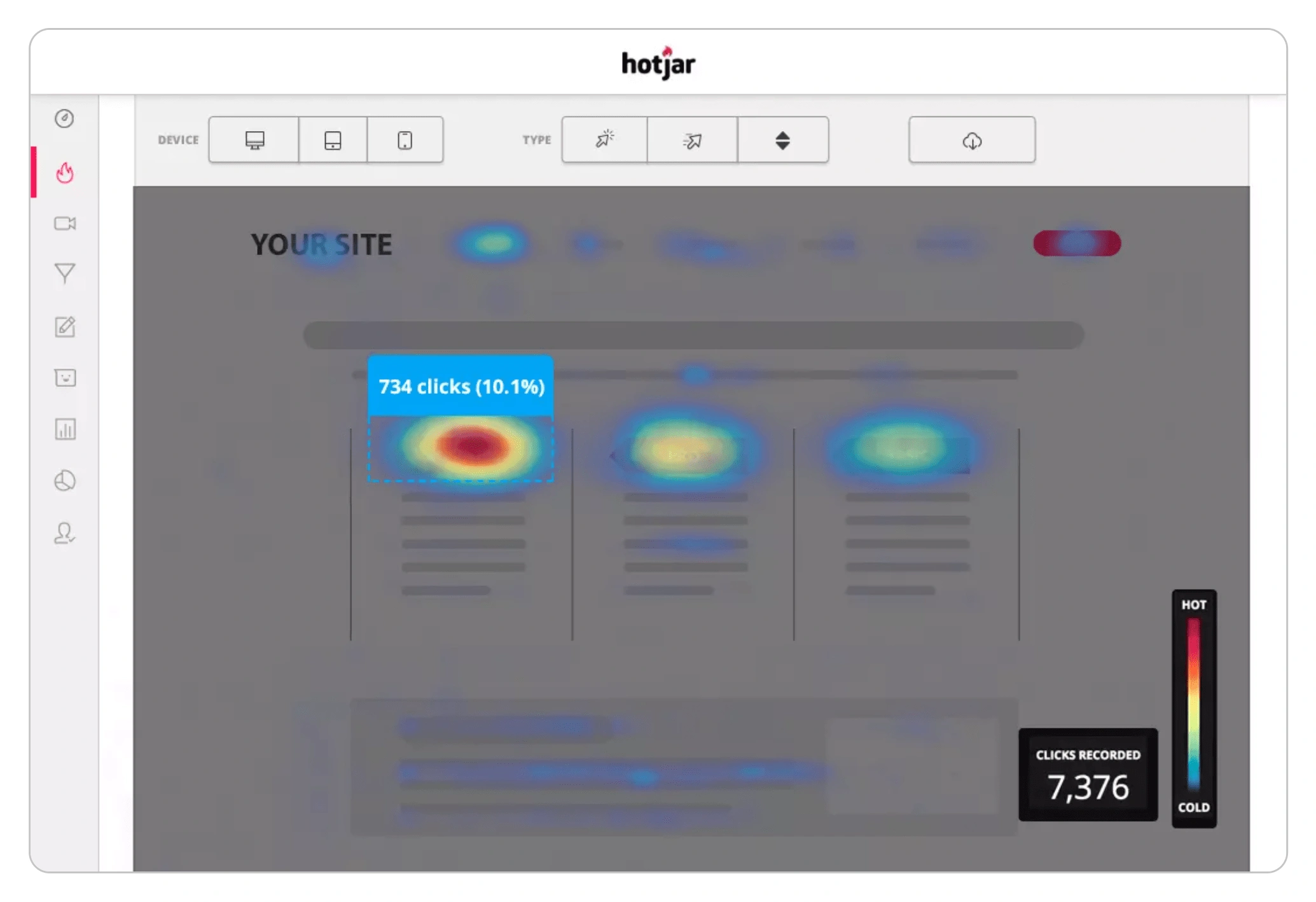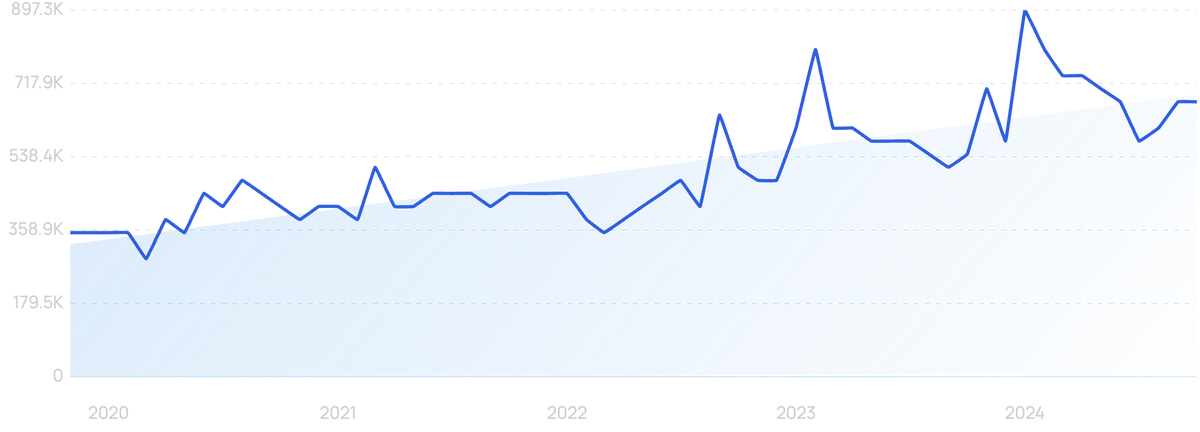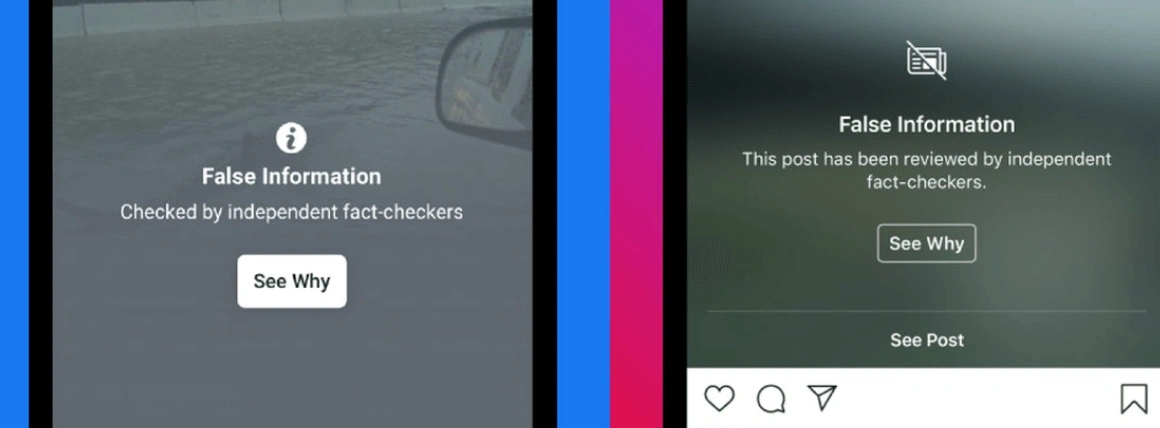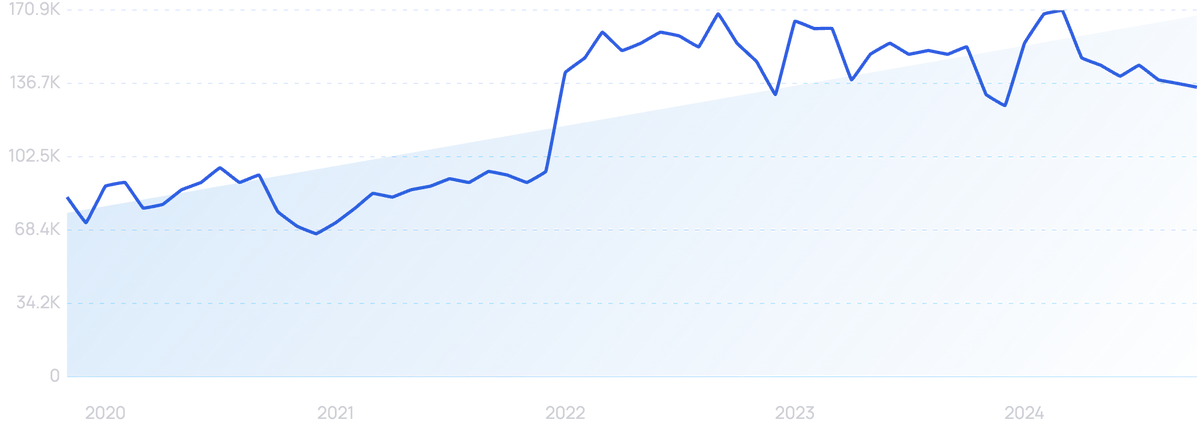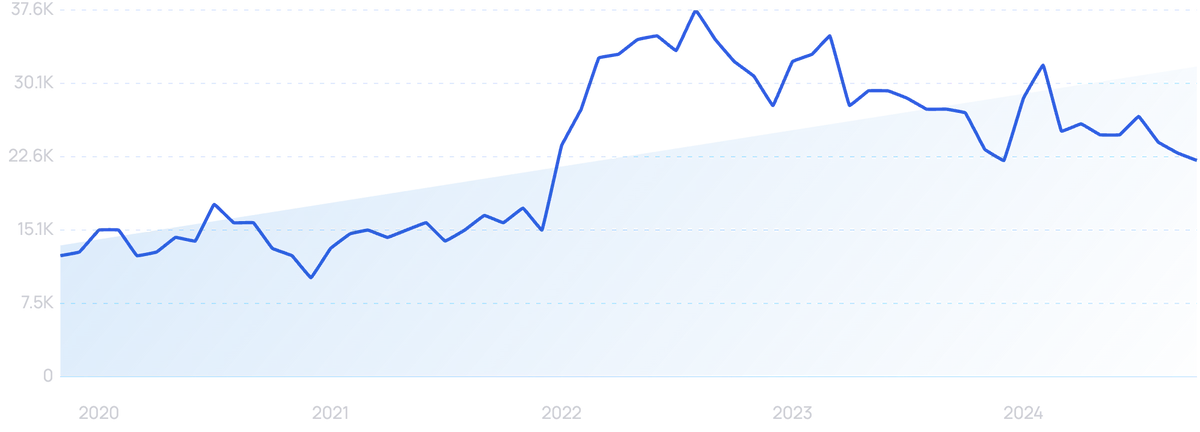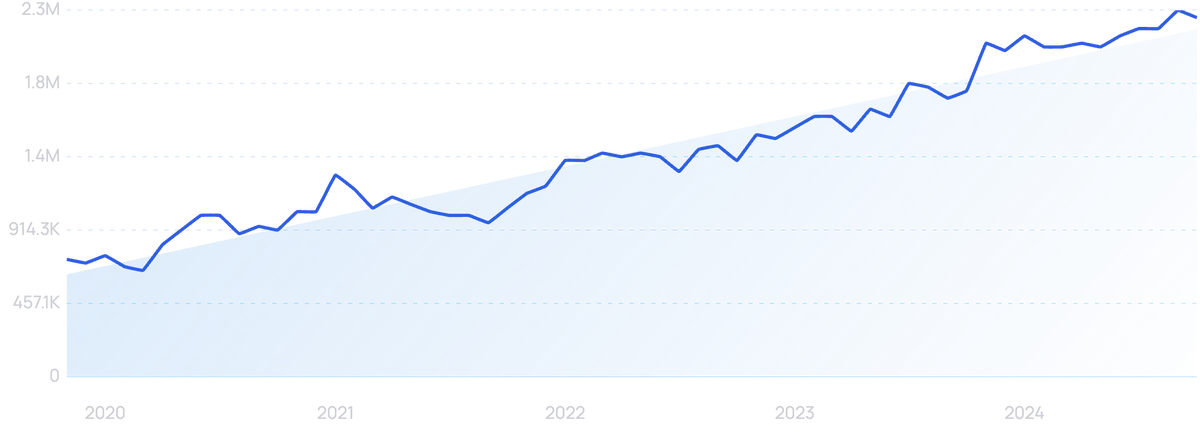
7 Important UX Design Trends (2025-2028)
You may also like:
The UX design field is always changing.
From new devices, platforms, startups, and consumer preferences, what constitutes "a good user experience" is in a constant state of flux.
So whether you’re a designer, developer, or just interested in tech, these are 7 UX trends to look out for over the next 3-4 years.
1. Users demand simplified UIs
“Flutter” searches took off in 2018 and are up 152% over the last 5 years.
Flat design may be on the way out.
But UI designers are increasingly understanding that the best UX comes from getting the basics right.
This is why designers are increasingly striving to only implement essential features.
And focus on minimalism over fancy 3D elements.
Developers are able to keep it simple through the likes of Flutter.
Flutter is Google’s portable UI toolkit that allows developers to create beautiful mobile apps from a single codebase.
Flutter is helping UX designers keep UIs simple and intuitive.
Flutter is making its name by offering complete control over every pixel on the screen.
Which makes it easy to add gradients, colors, and tweak UI elements.
Many see it as the future of custom design.
Few things illustrate the trend toward leaner user experience as much as the increase in single-page applications (SPAs).
SPAs aren’t a new phenomenon. However, developers are starting to turn to this option more frequently.
They are easy to use, thanks to less jumping around.
And we should expect to see them more and more in the coming years.
One leader of the pack for SPAs is React, a JavaScript library for building user interfaces, maintained by Facebook.
Who uses React?
Companies include Netflix, American Express, and (unsurprisingly) WhatsApp.
2. Designers double down on motion design
App users are getting more impatient by the day.
Keeping them engaged is tricky.
But UX designers are stepping up their game to meet the challenge.
Startups like Hotjar, with its heat map feature, provide crucial analytics. There is no longer any mystery about how users interact with your website.
You can see where users are clicking, and even their scrolling behavior.
Example of a heatmap report.
Which makes it easy to see where they're getting lost. Struggling with usability on your homepage. Or just plain losing interest.
How are UX designers responding to this newfound data?
Well, one solution is motion design.
The idea is to “grab down” the attention of the user.
You can save their time and direct them to a remarkable experience.
Some of the courses available at motiondesign.school.
Motion design is now in high demand.
Designers (and employers) realize that it's often the best way to hold user attention and improve comprehension.
Another way to tackle short attention spans is increased interactivity.
Every use case will be different, but expect more micro-interactions and animated scrolling.
3. Users look for authenticity
Searches for "deepfakes" regularly spike when the topic gets covered in the news. But the overall trend is up (91% over 5 years.)
According to the BBC, the number of online deepfake videos doubled between January and October of 2019.
And the MIT Technology Review described 2020 as "the year deep fakes went mainstream".
In 2024, 43% aged 16+ have seen a deepfake in the last six months.
This means that users are more skeptical than ever before. And are bound to have trust issues with new apps and websites.
(Especially e-commerce sites which require signing up, logging in, and entering payment information.)
Without user confidence, all other UI design developments become irrelevant.
That makes authenticity a primary consideration for designers in 2025 and beyond.
The way forward involves making adequate provisions for fact-checking. And more emphasis on ethics across the board.
For example, social networks are adding disclaimers and warnings:
Instagram has rolled out false information warnings in some parts of the world.
But progress on this has been inconsistent so far.
And, thanks to controversial fact-checking during the pandemic, some question whether the practice can work consistently.
4. Designers start to upskill
Searches for “UX design” have increased by 61% in 5 years.
UX expertise means taking and prioritizing input from a wide range of stakeholders.
The design process now, more than ever, requires a rigorous feedback loop.
But that doesn’t mean the role of the designer has been downplayed within corporate strategy.
Far from it.
Instead, we are starting to see the rise of "business designers".
This emergence is happening in two ways.
First, strategists are seeing how much they can improve their personal resumes by learning design skills.
Flip that around and there are also established UX designers looking at the big picture.
They’re now willing to spend less time on code.
And more time on corporate strategy. Social media marketing. Onboarding sequences. And other parts of the user experience that don't strictly fall under the "UX" umbrella.
Here is the ideal mentality of a business designer, according to Beyond Users:
That's one way for a UX designer to "check all the boxes" and advance their career: master all six of those mindsets and become business designers.
Business designers dissect the viewpoints and information provided by all collaborators.
That may include data scientists, illustrators, and content creators.
But one person is tasked with bringing it all together for a coherent strategy.
5. Content specialists find their niche
Google searches for “UX writing” are growing each year. And have overall increased by 79% in 5 years.
As you just saw, designers are now expected to tie a lot of different strands together.
Another example:
There's now an increased appreciation for...text.
And we're not talking about typography. But the words themselves.
Content is seen as a critical part of the design process.
Painstaking creative processes are too often damaged by disconnected copy.
With that now broadly accepted, the status of UX writing is rising along with Google searches for the topic.
And pay has followed suit.
Glassdoor estimates that an average UX designer's salary is around $108K.
And UX writers? According to talent.com, they can expect an average of $126,690.
What's more, this is one area where businesses are reluctant to turn to AI.
That’s because of an emphasis on "humanly writing". A level of personal connection is seen as vital to how users interact with and relate to a product.
6. AI becomes a mainstream design tool
AI isn’t a great solution for content creation...yet.
But it would be strange to look at current UX design trends without mention of artificial intelligence.
Computational design is the transition from people designing things for human consumption…to devising programs to do it for them.
To put it another way, machine learning is being used to speed up mundane tasks where the chances of making massive mistakes are minimal.
Clear parameters are set with the objective of mimicking the human decision-making process. The goal is not for machines to reach different outcomes.
Many image-conscious companies remain wary of AI.
They know product users may see it as a threat.
But, beyond the basics, AI is also dictating progress in the UX design world when it comes to iteration.
(For example, quickly creating numerous versions of a single landing page.)
This leads us nicely into our final trend.
7. Designers focus on inclusive design
“Trustpilot” searches haven’t seen any significant dips over the past 5 years (up 206%).
How does using AI to create multiple landing pages change things?
Because it makes every user feel like the app has been designed just for them. And that's revolutionary.
Customizable layouts are created off the back of huge data samples.
Users don’t always know exactly what they like and why. But they certainly know how they feel.
(This is why trends like skeuomorphism and neumorphism are taking off.)
Review sites like TrustPilot are growing in popularity thanks to their ability to let users publish their undiluted feedback.
(Feedback that plays an important role in design audits.)
Smart UX designers listen hard to straight-talking criticism and take their next steps accordingly.
Inclusive design is another hot part of this trend.
You can't make people feel like something has been designed for them if they don't see themselves IN the design.
For example:
The makers of a survival game called “Rust’’ made headlines back in 2016 for their decision to randomize each player’s character’s skin color.
That may have been controversial almost a decade ago. But UI designers are still working to represent everyone today.
There is ongoing pressure from tech influencers to solve UX challenges for all members of society.
Many are stepping up in response. Accessibility and inclusion are now central to many design briefs from the very beginning.
That can only be a good thing.
Wrapping Things Up
There you have it: the 7 biggest UI/UX design trends right now.
From simplified web design to augmented reality, the strategic importance of getting it right is more significant than ever. But the opportunities are bigger than ever, too.
Any way you cut it, the next few years are bound to be an exciting time in the UXD space.
Stop Guessing, Start Growing 🚀
Use real-time topic data to create content that resonates and brings results.
Exploding Topics is owned by Semrush. Our mission is to provide accurate data and expert insights on emerging trends. Unless otherwise noted, this page’s content was written by either an employee or a paid contractor of Semrush Inc.
Share
Newsletter Signup
By clicking “Subscribe” you agree to Semrush Privacy Policy and consent to Semrush using your contact data for newsletter purposes
Written By


Josh is the Co-Founder and CTO of Exploding Topics. Josh has led Exploding Topics product development from the first line of co... Read more

